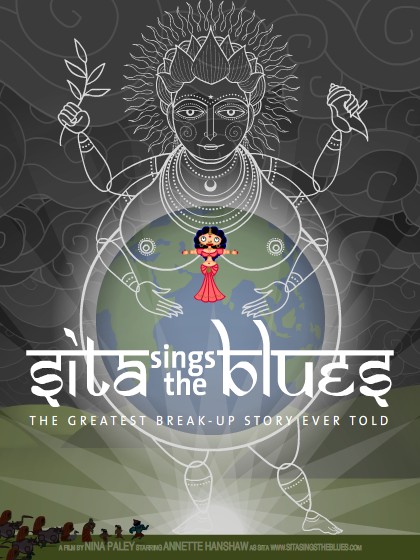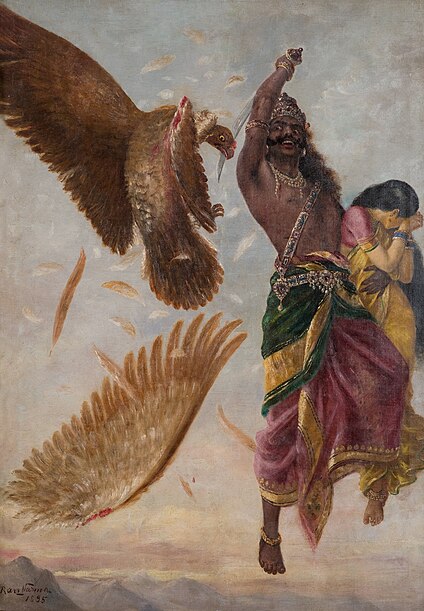Arjuna unpacked his bag at the top of the mountain and attempted to smooth out his deer-skin tunic. It had taken him three days to hike to this particular vantage point. The mountain sat in the very center of two deep green valleys, which ran east and west. This meant that Arjuna could face the sunrise in the mornings and then, just as easily, turn to the west and face the sun as it was setting. Many wise men before him had come to this place to fast and meditate, and for the same purpose Arjuna had arrived. With so much going on in the world below, the days of endless meditation seemed like an unnecessary distraction for the young prince, but he knew it would eventually be worth it
Arjuna took a deep breath and turned in a slow circle, taking in his surroundings. Tall trees surrounded most of the mountain top, excepting a wide, smooth rock ledge jutting out over the valleys below . A small stream trickled its way through the underbrush and the smell of over-ripened fruit and flowers lingered on the breeze. Hard blue stone sculpted the features of the Lord Shiva, who stared resolute and determined over the head of the prince, a start contrast to the dried flowers and candle wax remaining at his feet. Arjuna understood why this was a place of peace and solitude.
That night, Arjuna ate the remainder of the provisions he packed, wondering how it would be to not desire real food anymore. He was apprehensive about the spiritual journey ahead, but resolved to complete his task. He settled down on a bed of leaves and did not wake until he felt the warmth of the sun through the trees the following morning.
He ate a small breakfast, choosing a few pieces of fruit from the offering boughs, remembering to offer a few to the statue of Shiva before assuming his place on the rock ledge. Arjuna raised his arms to the sky, breathed deeply, and tried to clear his mind. Soon his arms grew tired, his stomach rumbled, and sweat formed on his brow. These things filled his mind and Arjuna knew he had reached a point where he could no longer continue for that day. He climbed down off the ledge, made another prayer to Shiva and retired to his bed of leaves.
Every day Arjuna rose and followed the same process: he would eat breakfast, pray to the god, meditate, pray, bathe, eat, and sleep. Every day raising his arms towards the sky took less effort, his stomach rumbled less, and his mind became clearer.
Eventually, Arjuna lost track of the days. His mind was prayer and meditation and his skin shone from cleanliness. Through the soles of his bare feet, Arjuna could feel the heat of the molten earth far below the surface of the mountain, and he prayed and beckoned the liquid fire forward. The mountain shook with such ferocity and spat fire and smoke into the sky, but Arjuna did not sway from his spot. The gods saw this and were pleased.
Months passed and Arjuna maintained his practice. He was standing on the ledge, facing the sun, when he heard a terrible crash through the branches behind him. Arjuna turned as a great boar came hurtling towards him. Despite months of standing in the same way, the prince had maintained his warrior reflexes, and lept deftly to the side, grabbing his old bow and shooting an arrow into the side of the boar all in one swift movement. Yet, at the exact moment his arrow pierced the boar, another arrow sunk itself into the flesh at precisely the same angle.
Arjuna remembered what was like to be hungry, and began firing off bolts towards the direction of the other hunter, who had stepped out from the forest. But the arrows merely sunk into the body and were absorbed. The air was still and no animals made noise, and Arjuna took no notice of this, because he was so filled with determination. Seeing how little affect his arrows had on the intruder, Arjuna threw his bow to the side and locked arms with the figure.
"How dare you!" Arjuna screamed, but it died in his throat. The figure before him stopped and stood still. Arjuna looked up and saw that he had been fighting the statue form of Shiva and he sank to his knees.
"Forgive me, Lord! I knew not!" he exclaimed, placing a garland of flowers around the stony neck. From the neck, a wave passed through the stone and living form of the god presented itself to Arjuna once more. Arjuna fell again at the feet of the god.
The god Shiva laughed and it sounded like thunder to the prince's ears.
"It was well done," he said, "and so I shall reward you."
Several weapons and a bow appeared glimmering where the prince knelt, and he seized them.
"Use these only when you have no other choice and only against the greatest of foes, for there might be dire consequences," Shiva warned.
Arjuna nodded, clutching the weapons to his chest. The god shone bright and disappeared from view. Arjuna knew his time of meditation was complete and gathered his belongings, setting off down the mountain to rejoin the rest of the world.
 |
| Meditation - From Sundance Studio |
Author's Note:
This story comes from the Public Domain Edition Ramayana. I chose to keep most of the story the same, but added more details and chose to write the story in my own style. I really liked this story since the main character is set off from so many others. At first, I thought about having his image of the god be just his imagination, but I liked it better that he actually saw Shiva.










